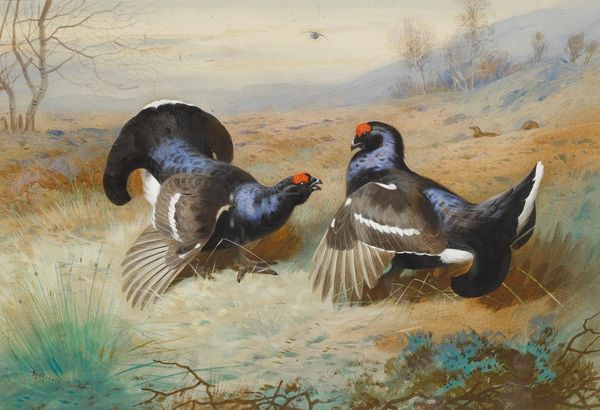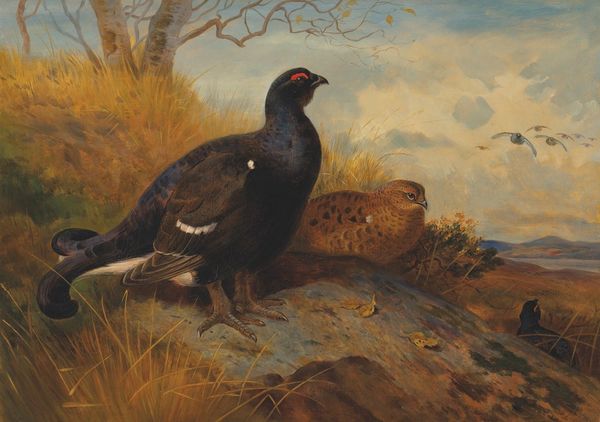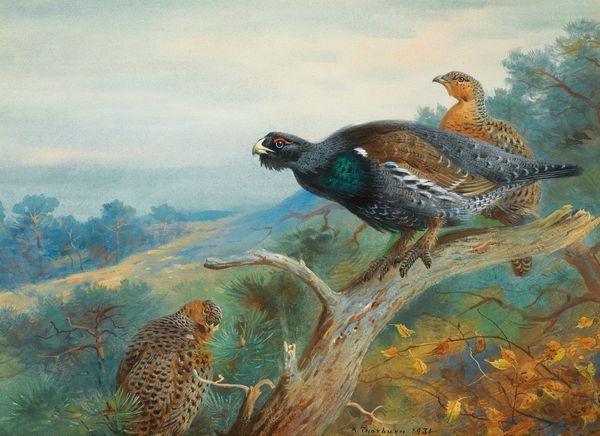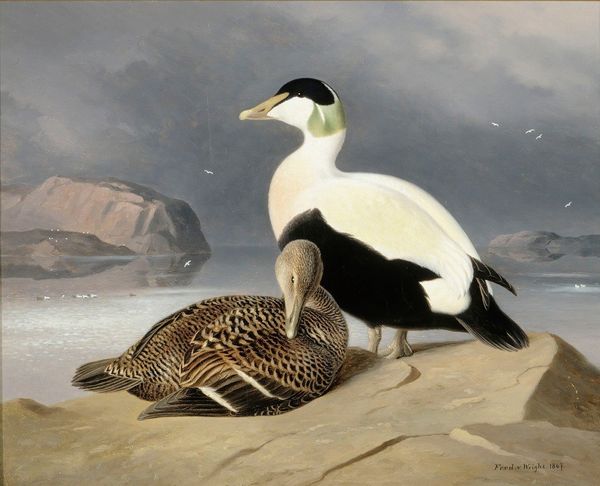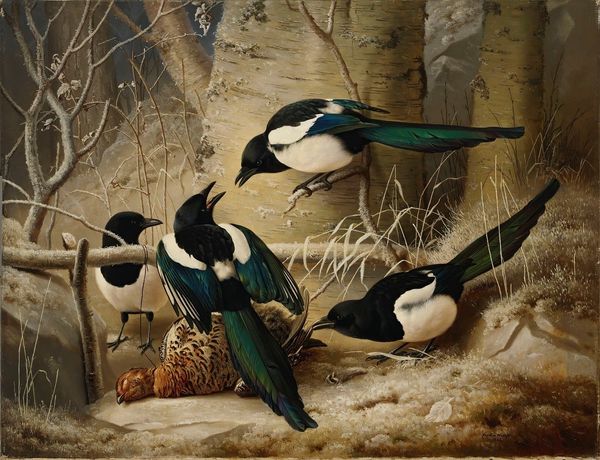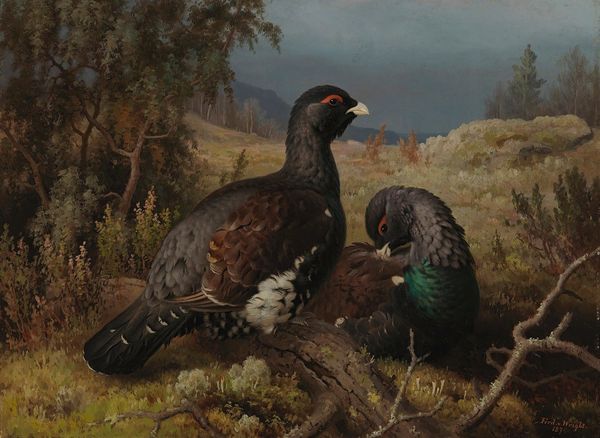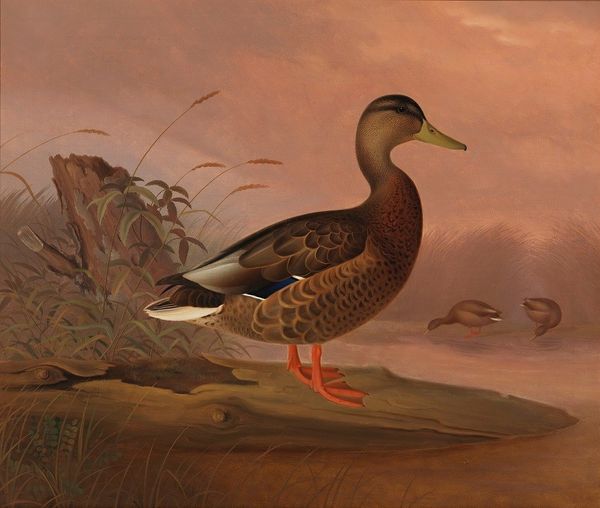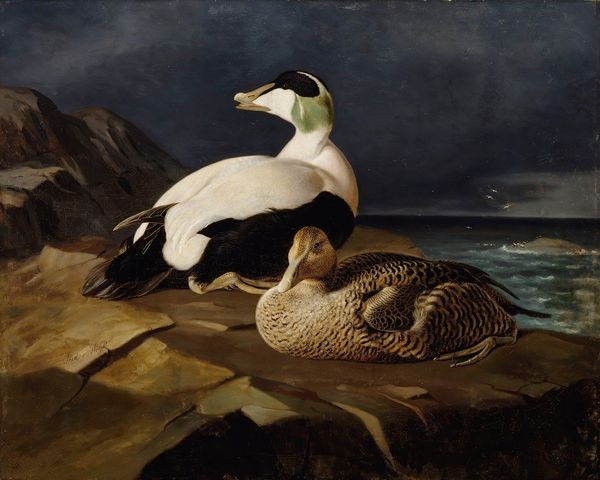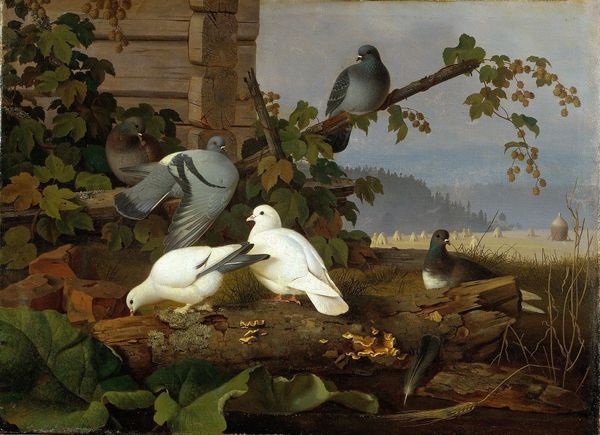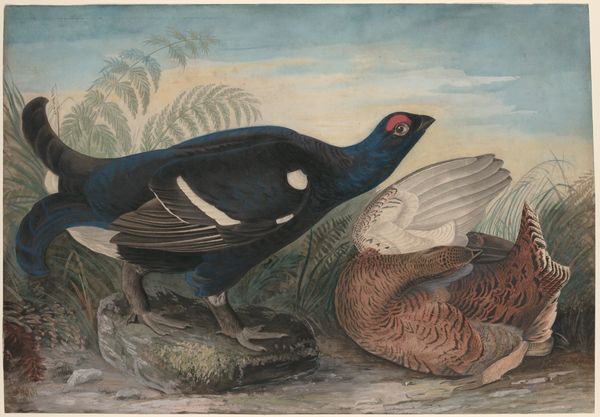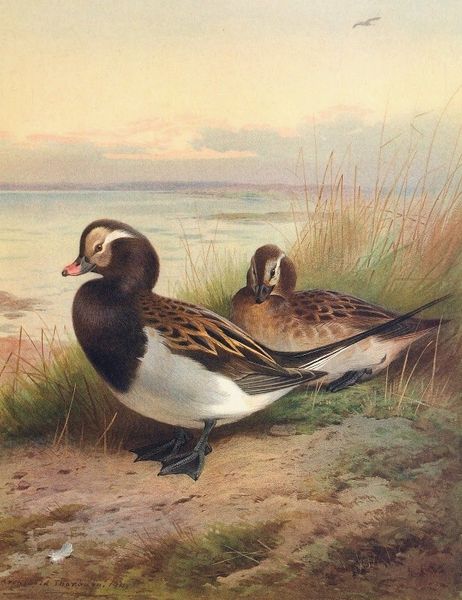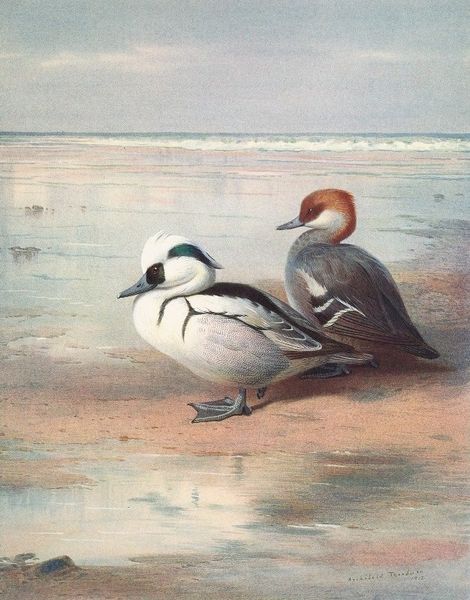
Copyright: Public Domain: Artvee
Curator: Let's take a moment to look at "Black Grouse, Cock and Hen" completed in 1869 by Ferdinand von Wright. This artwork offers an interesting look at Finnish wildlife through the lens of 19th-century Romanticism and Realism. Editor: It’s such a serene scene. The crispness of the air almost comes through in the paint, doesn’t it? The textures are very palpable, especially in the grouse’s feathers. It’s as if you could reach out and feel their warmth against the snow. Curator: Yes, and consider the cultural context! Von Wright, though of Swedish descent, played a crucial role in establishing Finnish national identity through his depictions of nature. This wasn't merely painting; it was nation-building. Editor: I’m particularly drawn to how the paint is handled. Note the contrast: The smooth, almost polished rendering of the birds against the looser, sketchier landscape behind them. You can really see the layering and the deliberate process of building up the image. I wonder, did he prepare his own pigments, and if so what raw materials did he choose to depict a cock and hen so strikingly? Curator: Indeed. Think about what paintings like this communicated in a society rapidly urbanizing. These images of untouched wilderness were powerful symbols, almost political statements about what Finland should value and protect. This was a period of heightened interest in naturalism but also about imbuing art with moral meaning. Editor: I appreciate how it avoids idealization. The birds are just...birds. But so masterfully rendered and precisely detailed to make one almost wonder at von Wright’s skills with a brush. It feels very grounded in lived experience of seeing such scenes. How different this is from history painting of the same period, a rejection of epic heroism for everyday life, or perhaps something far more politically interesting. Curator: Exactly! And the decision to paint it *en plein air* also speaks volumes about the shifting art world. Rather than simply creating a clinical depiction of wildlife, he embraced the open air capturing fleeting light and creating a tangible atmosphere. The painting actively encourages us to consider our place in the natural world. Editor: Agreed, and his direct engagement with the outdoors would affect not just his chosen palette of pigments but also his own bodily relationship to labor, to making in situ. I would love to analyze soil samples taken around this location and compare these with his known pigments used to try and re-assemble some aspect of von Wright's artistic experience. Curator: Considering his paintings in this light really helps to move them from sentimental landscapes into complex social and ecological commentary. Editor: Right! It's more than just a pretty picture; it's about the way we make art and build meaning.
Comments
No comments
Be the first to comment and join the conversation on the ultimate creative platform.
